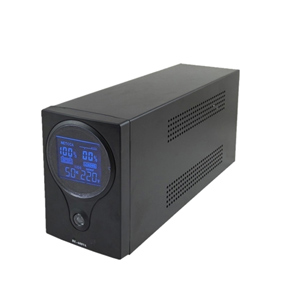How Many Watts Does a UPS Use?
How much power does the UPS have? How to choose UPS power? The sum of squares of UPS active power and reactive power is equal to the square of apparent power. Generally, the active power is about 60%-70% of the apparent power. Confirm the power of the equipment loaded by our UPS, and then you can confirm the power of the UPS. In general, ATO.com recommends that the load power accounts for 30% to 80% of the UPS power.
How much power does the UPS have?
“W” represents real work, “VA” represents virtual work, and there is a power factor difference between the two. W=VA cosθ, this cosθ is the power factor. What is the power factor? Different brands of products, some are 0.6, and some are 0.8. At present, most of the commercially available products are set at 0.7. The power designed by different manufacturers of UPS is different.
How to choose UPS power?
To determine the power of your device, generally speaking, the power of a common PC or industrial computer is around 200W, the iPhone is around 300W, and the server is between 300W and 600W. The power of the UPS should be determined according to the two aspects of load and delay.
- Load. Determine how much the load is, in order to solve the problem that can be driven.

- Delay. Delay refers to the question of how long the power supply can be supplied after the mains power is interrupted. In the case of a given load and UPS power, the delay time depends on the capacity of the power supply battery. The longer the delay, the greater the capacity of the battery is required, which also means more investment. With a load of 3000 watts, using a 100ah 12-volt battery, 16 cells in series are calculated as 192 volts: 3000÷192=15.625A, 100(ah)÷15.625(A)=6.4 (hours), it can supply power for 6 hours and 24 minutes.
The selection of UPS power is based on the wattage (power) of the field equipment. For example, if your equipment has 10KW, you can choose 10÷0.8=12.5kW, which means that 10kW equipment needs 12.5kVA UPS, but there is no 12.5 in the market. General UPS specifications are 1kVA, 2kVA, 3kVA, 5kVA, 6kVA, 8kVA, 10kVA, 15kVA, 20kVA and so on. ATO provides 600VA ~10kVA online interactive UPS with high reliability, come and buy.
The UPS should not run at full load for a long time. The backup UPS generally selects the load of 60%-70% of the rated power, and the online UPS generally selects the load of 70%-80% of the rated power. In order to prolong the service life of the battery, the UPS should not be operated in an excessive light load state for a long time.
The ability of a UPS to carry non-linear loads mainly depends on its reactive power. The larger the reactive power, the stronger the ability to cope with non-linear loads. Therefore, reactive power should be used as a criterion to select a UPS.
The above is how to choose UPS power. The input power factor of the UPS can be increased to above 0.95. Generally speaking, an increase in the input power factor is beneficial to the input grid because it reduces disturbance to the grid. For UPS, the benefit is not obvious, because how much power the UPS needs is still according to its own way and requirements.

